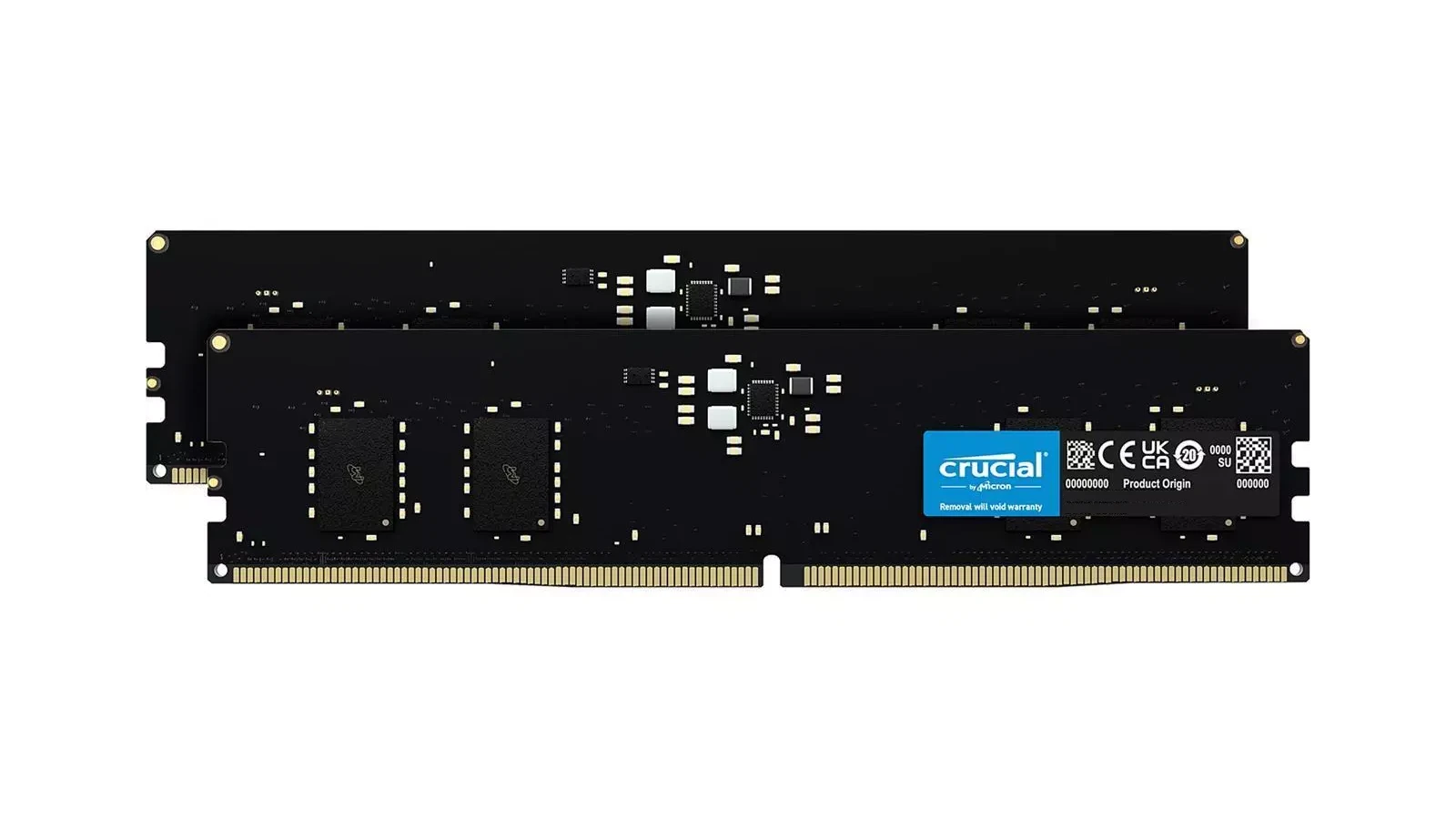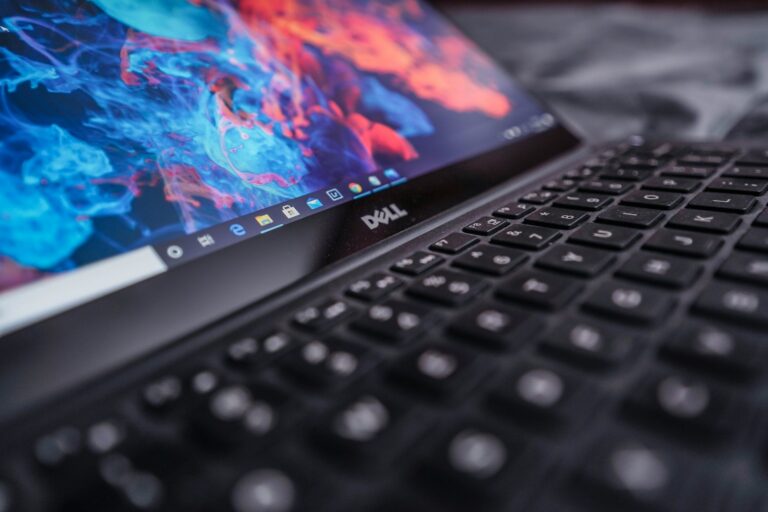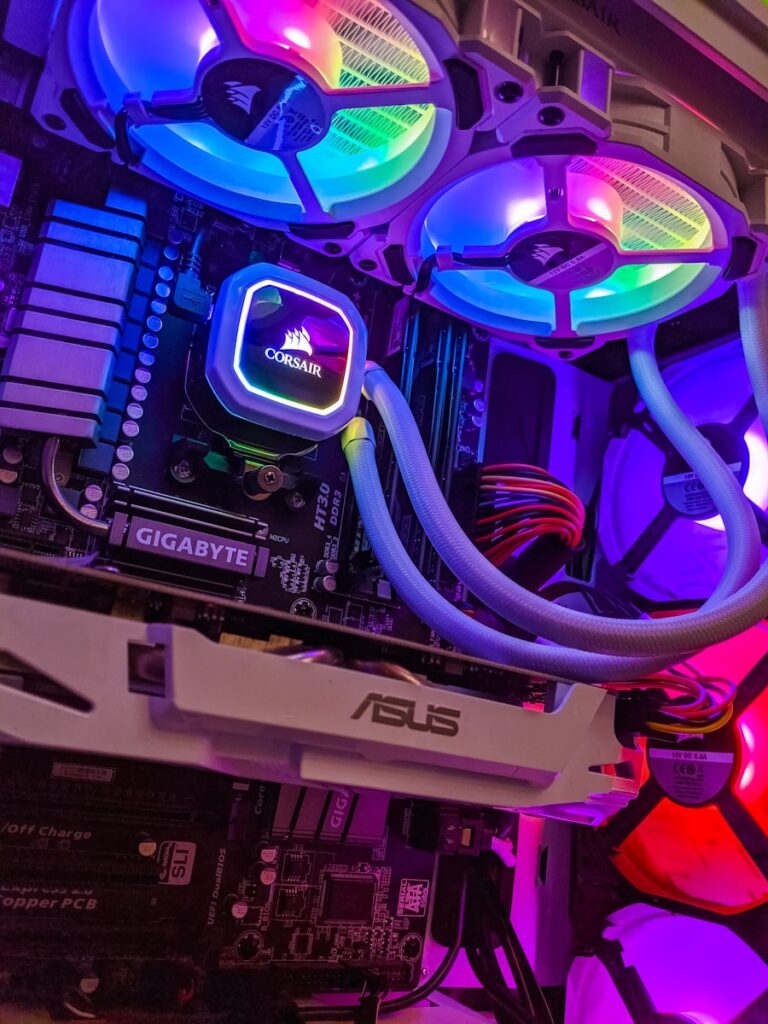
DDR6 RAM is the next step in memory technology, expected to launch in late 2025 or 2026. The first draft of the standard is likely to come out in early 2025 and that will likely lead to early DDR6 chips becoming available in late 2025 or early 2026. We’ll most likely see them used in actual products sometime in 2026 but it is unclear when. For PCs we’ll need to go through a major motherboard/chipset transition so we don’t expect that to happen until 2026 either.
DDR6 will offer data transfer speeds of up to 12,800 Mbps and will support four memory channels per module. It aims to improve performance beyond what DDR5 can currently do. DDR6 has the potential to enhance how computers work, offering higher bandwidth and lower voltage than DDR5. This technology could improve system responsiveness and efficiency, impacting various areas such as gaming and scientific research. As people in the tech world look forward to DDR6’s arrival, they wonder about its effects on PC performance and pricing. While we still need to see what DDR6 can fully achieve, its development shows that memory technology is advancing. The table below compares key features of recent DDR generations:
| Feature | DDR4 | DDR5 | DDR6 (Expected) |
|---|---|---|---|
| Max Speed | 3200 MT/s | 6400 MT/s | 12800 MT/s |
| Channels | 1 | 2 | 4 |
| Voltage | 1.2V | 1.1V | Lower than DDR5 |
| Release Year | 2014 | 2020 | 2026 (Estimated) |
DDR6 RAM: A Leap Forward in Memory Technology
Get ready for a major memory upgrade! DDR6 RAM, the next generation of memory technology, is on the horizon and poised to revolutionize computing performance. While DDR5 is still relatively new, the tech world is already buzzing with anticipation for DDR6, which promises significant advancements in speed, capacity, and efficiency.
Expected Arrival
The first draft of the DDR6 standard is expected sometime in 2024, with the official specification likely finalized in early 2025. This means we could see the first DDR6 modules hitting the market in late 2025 or early 2026. However, widespread adoption and integration into consumer devices might take a bit longer.
Performance Boost
DDR6 is expected to deliver a substantial performance boost compared to DDR5. Early rumors suggest a potential doubling of bandwidth, with speeds ranging from 8,800 MHz to 12,800 MHz. More recent leaks hint at even higher bandwidth, potentially reaching up to 17,600 MHz or even 21,000 MHz in certain configurations. This translates to significantly faster data transfer rates and improved overall system performance.
Increased Capacity
Along with speed, DDR6 is also expected to offer increased memory capacity per module. This means you’ll be able to pack more RAM into your system, enabling smoother multitasking, handling of larger datasets, and improved performance in memory-intensive applications.
Improved Efficiency
DDR6 is designed with power efficiency in mind. It’s expected to operate at lower voltages than DDR5, reducing power consumption and improving battery life in laptops and mobile devices.
Potential Applications
The increased speed and capacity of DDR6 will benefit a wide range of applications, including:
- Gaming: Faster RAM can lead to smoother gameplay, reduced loading times, and improved frame rates, especially in demanding games.
- Content Creation: Video editing, 3D rendering, and other content creation tasks will benefit from the increased bandwidth and capacity, allowing for faster processing and smoother workflows.
- Artificial Intelligence: AI applications require vast amounts of memory to process and analyze data. DDR6 can help accelerate AI workloads and enable more complex AI models.
- High-Performance Computing: Scientific simulations, financial modeling, and other high-performance computing tasks will benefit from the increased memory bandwidth and capacity.
Looking Ahead
While DDR6 is still in development, the anticipation is building for this next-generation memory technology. As the official specifications are finalized and the first modules become available, we can expect to see a significant leap forward in computing performance across various applications.
The Future of Memory: Beyond DDR6
Even as DDR6 is on the horizon, researchers and engineers are already exploring future memory technologies that could push the boundaries of performance even further. Some of these emerging technologies include:
- DDR7: While still in the early stages of development, DDR7 is expected to offer even higher speeds and bandwidth than DDR6.
- Non-Volatile Memory Express (NVMe): NVMe is a storage technology that can also be used as memory, offering extremely fast data access speeds.
- 3D XPoint: This is a new type of memory that combines the speed of DRAM with the persistence of NAND flash memory.
These advancements in memory technology hold the promise of even more powerful and efficient computing in the years to come.
Evolution of RAM
Random Access Memory has undergone significant changes over the years. Each new generation has brought faster speeds, increased capacity, and improved energy efficiency.
From DDR1 to DDR4
DDR1 marked the beginning of modern RAM technology. It operated at speeds up to 400 MHz and had a maximum capacity of 1 GB per module. DDR2 followed with speeds up to 1066 MHz and 4 GB modules.
DDR3 brought a big leap in performance. It reached speeds of 2133 MHz and supported up to 16 GB modules. This generation also reduced power consumption by 30% compared to DDR2.
DDR4 pushed speeds even further to 3200 MHz. It allowed for larger 64 GB modules and cut power usage by another 20%. DDR4 also introduced new features like on-die termination and data bus inversion.
| Generation | Max Speed | Max Module Size | Voltage |
|---|---|---|---|
| DDR1 | 400 MHz | 1 GB | 2.5V |
| DDR2 | 1066 MHz | 4 GB | 1.8V |
| DDR3 | 2133 MHz | 16 GB | 1.5V |
| DDR4 | 3200 MHz | 64 GB | 1.2V |
Transition to DDR5 and DDR5 RAM
DDR5 launched in 2020, bringing major improvements. It doubled the bandwidth of DDR4 while reducing power consumption. DDR5 supports speeds up to 6400 MHz and module sizes up to 128 GB.
Key DDR5 enhancements include:
- On-die ECC for improved reliability
- Dual-channel architecture on a single module
- Better power management with on-module voltage regulation
DDR5 adoption has been steady but slower than previous generations. This is partly due to its higher cost and the need for new motherboards and processors.
DDR6 RAM Advancements
DDR6 aims to push memory technology even further. While still in development, early reports suggest impressive capabilities.
- Speeds up to 12,800 MHz
- Four memory channels per module
- Further reduced power consumption
- Increased data density
DDR6 may also incorporate new manufacturing techniques like Modified Semi-Additive Process (MSAP). This could allow for thinner and more efficient memory modules.
The release of DDR6 is projected for 2024-2025. It promises to enable new applications in artificial intelligence, high-performance computing, and data centers.
Technical Specifications
DDR6 RAM brings significant advancements in data speeds, memory capacity, and power efficiency. These improvements promise to revolutionize computer performance and capabilities.
Data Speeds and Bandwidth
DDR6 RAM is set to deliver unprecedented data transfer speeds. Projections suggest rates of up to 12,800Mbps on standard JEDEC modules. This represents a substantial leap from its predecessor, DDR5.
Overclocked modules may reach speeds of up to 17,000Mbps. These high speeds translate to increased bandwidth, allowing for faster data processing and improved system responsiveness.
The enhanced data rates enable smoother multitasking and faster loading times for demanding applications. This improvement is particularly beneficial for tasks such as video editing, 3D rendering, and complex simulations.
Memory Channels and Capacity
DDR6 RAM introduces a four-channel memory architecture. This design allows for more efficient data transfer between the RAM and the processor.
The increased number of channels contributes to higher overall bandwidth. It enables simultaneous data transfers, reducing bottlenecks in memory-intensive operations.
DDR6 is expected to support larger memory capacities. This expansion allows for more data to be held in RAM, reducing the need for frequent access to slower storage devices.
| Feature | DDR5 | DDR6 |
|---|---|---|
| Channels | 2 | 4 |
| Max Speed | 6,400 MT/s | 12,800+ MT/s |
| Power Efficiency | Good | Better |
Power Management and Efficiency
DDR6 RAM incorporates advanced power management features. These enhancements aim to reduce energy consumption while maintaining high performance.
The new standard is designed to operate at lower voltages compared to its predecessors. This reduction in power requirements leads to decreased heat generation and improved overall system efficiency.
DDR6 includes more sophisticated power management ICs. These components allow for finer control over power distribution and consumption within the memory modules.
The improved efficiency of DDR6 RAM is particularly valuable for mobile devices and data centers. It enables longer battery life in laptops and reduced cooling needs in server environments.
Industry Standards and Compliance
DDR6 RAM development focuses on meeting industry standards and improving manufacturing processes. These efforts aim to boost performance and efficiency in next-generation memory technology.
JEDEC Modules and Standards
JEDEC plays a key role in setting standards for DDR6 RAM. The organization plans to finalize the DDR6 specification around the second quarter of 2025. This timeline allows manufacturers to prepare for production and implementation.
JEDEC’s work on DDR6 builds upon previous memory standards. The new specification targets higher data rates and improved power efficiency. DDR6 is expected to achieve speeds up to 12,800 MT/s, doubling the performance of DDR5.
The standard will likely include features to support artificial intelligence and other demanding applications. JEDEC is also developing LPDDR6 for mobile devices, focusing on increasing bandwidth and reducing power consumption.
MSAP Technology in DDR6
Modified Semi-Additive Process (MSAP) technology is set to play a crucial role in DDR6 manufacturing. This advanced technique allows for thinner and more precise circuit patterns on memory modules.
MSAP enables higher density and improved signal integrity in DDR6 RAM. The technology supports the creation of finer traces and smaller gaps between components. This results in better electrical performance and reduced signal noise.
Manufacturers adopting MSAP can produce DDR6 modules with enhanced reliability and speed. The process also contributes to lower power consumption, aligning with the industry’s focus on energy efficiency.
| Feature | DDR5 | DDR6 (Expected) |
|---|---|---|
| Max Speed | 6,400 MT/s | 12,800 MT/s |
| Channels | 2 | 4 |
| Manufacturing | Traditional | MSAP |
| Release | 2020 | 2025 (Estimated) |
Use Cases and Performance
DDR6 RAM promises significant performance gains across various applications. Its enhanced speeds and efficiency make it particularly suited for demanding computing tasks.
Gaming and Overclocking
DDR6 RAM is set to revolutionize gaming performance. With data transfer speeds up to 12,800 Mbps, gamers can expect smoother gameplay and faster load times. This increased bandwidth allows for quicker texture loading and improved frame rates in graphics-intensive titles.
Overclocking enthusiasts will find DDR6 modules highly appealing. The new standard’s improved voltage efficiency enables greater headroom for pushing memory speeds beyond stock settings. This translates to potential performance gains in CPU-bound scenarios.
| Feature | DDR5 | DDR6 |
|---|---|---|
| Max Speed | 6400 MT/s | 12,800+ MT/s |
| Channels | 2 | 4 |
| Voltage | 1.1V | Lower |
Enterprise and High-Performance Computing
In enterprise environments, DDR6 RAM will excel at handling large datasets and complex calculations. Its increased bandwidth and lower latency are crucial for AI and machine learning applications, allowing for faster model training and inference.
High-performance computing tasks like scientific simulations and financial modeling will benefit greatly from DDR6’s capabilities. The improved efficiency and speed enable researchers and analysts to process more data in less time.
Major memory manufacturers like Samsung, SK Hynix, and Micron are expected to lead DDR6 development. This competition will likely drive innovation and potentially accelerate the adoption of DDR6 in both consumer and enterprise markets.
Frequently Asked Questions
DDR6 RAM promises significant advancements in speed and performance. Its release timeline, pricing, compatibility, and technical specifications are of interest to many tech enthusiasts and professionals.
What is the expected release date for DDR6 RAM?
DDR6 RAM is still in development. The first draft of the DDR6 standard is expected in 2024. The official specification may be finalized in early 2025.
Consumers might see DDR6 RAM available for purchase around 2026.
How is the pricing of DDR6 RAM expected to compare to previous generations?
Pricing for DDR6 RAM is not yet determined. New RAM generations often come with a price premium at launch.
As production ramps up and becomes more efficient, prices typically decrease over time.
Will DDR6 RAM be compatible with current laptops?
DDR6 RAM will not be compatible with current laptops. New motherboards and processors will be needed to support DDR6 technology.
Upgrading to DDR6 will require a complete system overhaul.
What speed improvements are anticipated with DDR6 RAM over DDR5?
DDR6 RAM is expected to offer significant speed improvements over DDR5. Data rates may double compared to DDR5.
Some estimates suggest speeds could reach up to 12,800 Mbps for DDR6.
Which motherboards will support DDR6 RAM?
Motherboards supporting DDR6 RAM have not been announced yet. New chipsets and motherboards will be designed specifically for DDR6 compatibility.
Major manufacturers will likely release DDR6-compatible motherboards closer to the RAM’s launch date.
How does DDR6 RAM compare in performance to DDR5?
DDR6 RAM is expected to outperform DDR5 in several areas. It may use dual 12-bit channels per module, compared to DDR5’s dual 16-bit channels.
This change in architecture could lead to improved efficiency and higher data transfer rates.
| Feature | DDR5 | DDR6 (Expected) |
|---|---|---|
| Data Rate | Up to 6,400 MT/s | Up to 12,800 MT/s |
| Channel Design | Dual 16-bit | Dual 12-bit |
| Power Efficiency | Improved over DDR4 | Further improved |
| Capacity | High | Higher |






